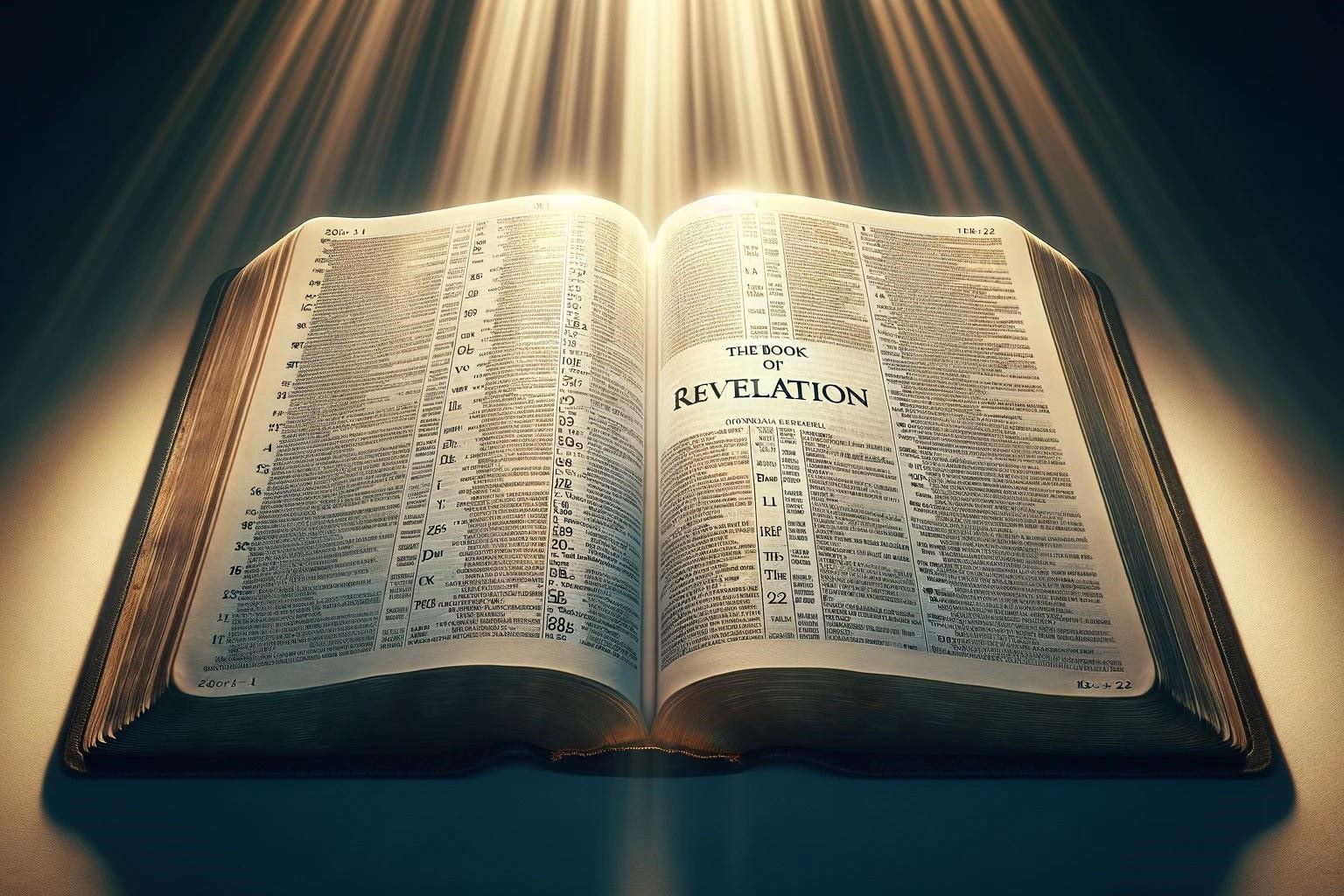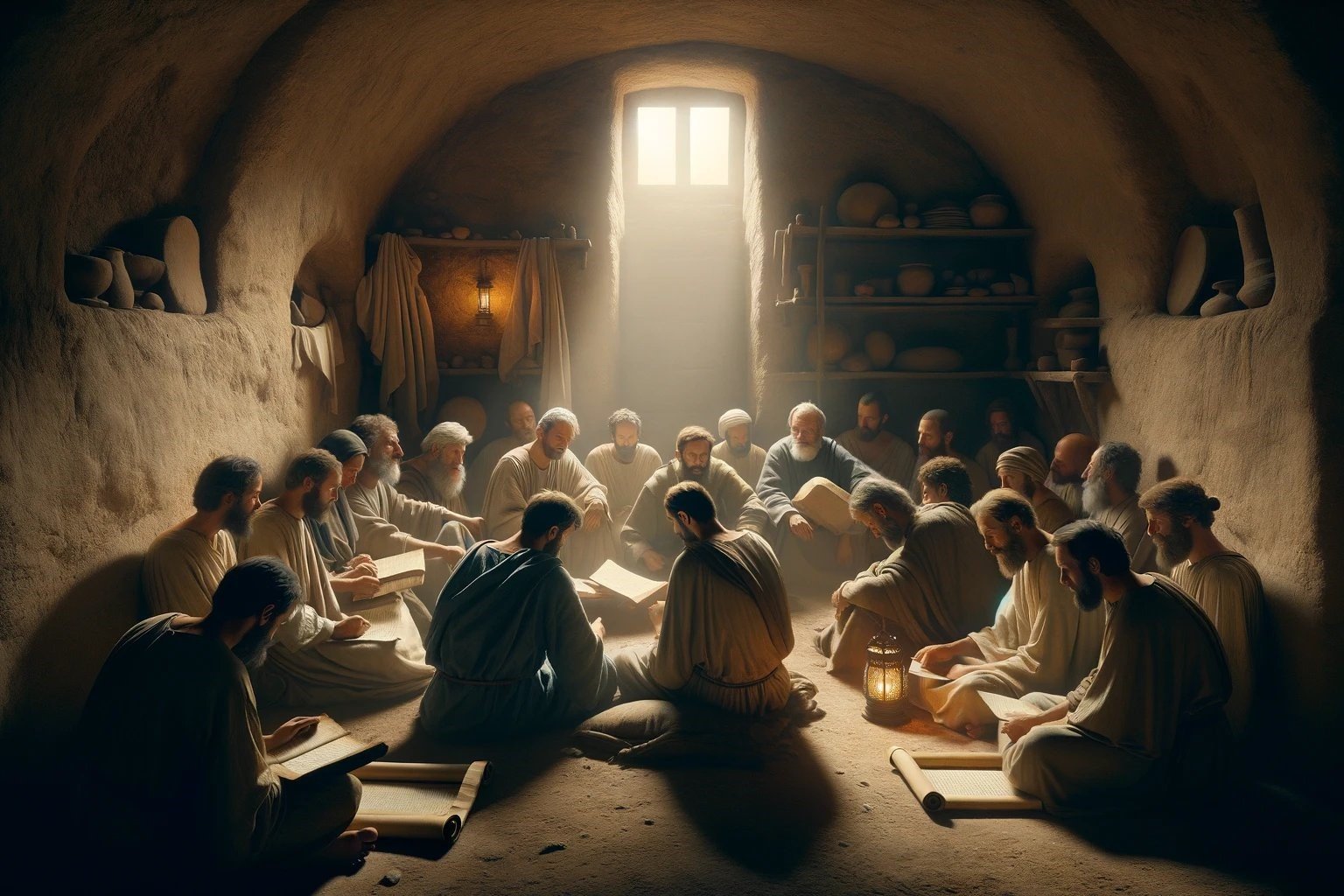Home>Bible Facts>How Do You Cite The Book Of Revelation


Bible Facts
How Do You Cite The Book Of Revelation
Published: February 11, 2024
Peter Smith, Editorial Director at Christian.net, combines deep insights into faith, politics, and culture to lead content creation that resonates widely. Awarded for his contributions to religious discourse, he previously headed a major organization for religious communicators, enhancing dialogue on faith's societal impacts.
Learn how to cite the Book of Revelation and discover interesting Bible facts. Find out the best practices for citing biblical texts.
(Many of the links in this article redirect to a specific reviewed product. Your purchase of these products through affiliate links helps to generate commission for Christian.net, at no extra cost. Learn more)
Table of Contents
Introduction
The Book of Revelation, also known as the Apocalypse of John, is the final book of the New Testament. It is a profound and enigmatic text that has captivated readers for centuries. This apocalyptic work is attributed to John the Apostle and is believed to have been written during a time of intense persecution of early Christians. The Book of Revelation is renowned for its vivid imagery, symbolic language, and prophetic messages, making it a subject of fascination, scholarly study, and theological interpretation.
As one delves into the intricate layers of the Book of Revelation, it becomes evident that the text is rich with profound symbolism and allegorical representations. Its themes encompass cosmic conflict, divine judgment, the ultimate triumph of good over evil, and the promise of a new heaven and a new earth. The book's narrative unfolds through a series of visions and prophecies, offering a compelling portrayal of the end times and the establishment of God's eternal kingdom.
Given the significance and complexity of the Book of Revelation, it is essential for scholars, researchers, and students to understand how to cite this biblical text accurately. Proper citation not only demonstrates academic integrity but also allows readers to locate and verify the referenced passages. Whether citing the Book of Revelation within the text of a paper or including it in a bibliography or works cited page, adhering to established citation guidelines is paramount.
In the subsequent sections of this article, we will explore the nuances of citing the Book of Revelation, providing insights into the distinctive features of this biblical book and offering practical guidance for accurate and effective citation practices. By understanding the intricacies of citing the Book of Revelation, scholars and enthusiasts can navigate the scholarly landscape with confidence and precision, ensuring that the profound wisdom and timeless messages of this apocalyptic masterpiece are shared and preserved with the utmost clarity and authenticity.
Read more: How To Understand The Book Of Revelation
Understanding the Book of Revelation
The Book of Revelation, the final entry in the New Testament, is a profound and enigmatic work that has intrigued and perplexed readers for centuries. Attributed to John the Apostle, this apocalyptic text is believed to have been written during a period of intense persecution of early Christians. Its enduring appeal lies in its vivid imagery, symbolic language, and prophetic messages, which have sparked intense scholarly study and theological interpretation.
Revelation is a complex and multi-layered text, rich with profound symbolism and allegorical representations. Its themes encompass cosmic conflict, divine judgment, the ultimate triumph of good over evil, and the promise of a new heaven and a new earth. The narrative unfolds through a series of visions and prophecies, offering a compelling portrayal of the end times and the establishment of God's eternal kingdom.
The book is structured as a series of visions and symbolic images, presented to the author, John, while he was exiled on the island of Patmos. These visions are conveyed through vivid and often surreal imagery, depicting cosmic battles, heavenly worship, and the ultimate victory of Christ over the forces of evil. The symbolic language and apocalyptic imagery used in Revelation have inspired a wide array of interpretations, ranging from historical to allegorical and even futuristic perspectives.
Revelation's distinctive literary style sets it apart from other biblical texts. It employs a rich tapestry of symbols, numbers, and allegorical representations, inviting readers to engage in deep contemplation and interpretation. The book's vivid and often cryptic imagery has led to diverse and sometimes conflicting interpretations, contributing to its enduring mystique and scholarly fascination.
Understanding the Book of Revelation requires an appreciation for its historical context, literary style, and theological significance. It is a text that continues to provoke thought, inspire creativity, and ignite passionate discourse among scholars, theologians, and believers. As readers delve into the depths of Revelation, they encounter a work that transcends time and space, offering profound insights into the human condition, the nature of divine justice, and the ultimate triumph of God's redemptive plan.
In the subsequent sections of this article, we will delve into the intricacies of citing the Book of Revelation, providing practical guidance for accurately referencing this profound and enigmatic biblical text. By gaining a deeper understanding of Revelation and its distinctive features, scholars and enthusiasts can navigate the scholarly landscape with confidence and precision, ensuring that the timeless wisdom and prophetic messages of this apocalyptic masterpiece are conveyed with clarity and authenticity.
Citing the Book of Revelation in the Text
When citing the Book of Revelation within the text of a paper or scholarly work, it is essential to adhere to established citation guidelines to ensure accuracy and consistency. The specific format for citing biblical texts, including Revelation, may vary depending on the style guide or academic conventions being followed. However, there are general principles that can guide the proper citation of the Book of Revelation in the text.
One common approach to citing biblical passages, including those from Revelation, is to include the name of the book, the chapter, and the verse. For example, a citation from the first chapter of Revelation might appear as "Revelation 1:1" or "Rev. 1:1." When referencing specific verses within a chapter, it is customary to include the verse number after the chapter, separated by a colon. This format allows readers to easily locate the cited passage within the biblical text.
In scholarly writing, it is important to establish the version or translation of the Bible being used, as different translations may render verses with slight variations in wording. For instance, if citing from the New International Version (NIV) of the Bible, the citation would specify "NIV" after the passage, such as "Revelation 1:1 (NIV)." This practice ensures transparency and accuracy in referencing the source material.
Moreover, when integrating biblical citations into the narrative, it is advisable to consider the surrounding context and ensure that the citation seamlessly aligns with the flow of the text. This can be achieved by incorporating the citation in a manner that enhances the coherence and clarity of the writing, while also respecting the sacred nature of the biblical text.
In academic and theological discourse, the Book of Revelation often serves as a source of inspiration and reference for theological arguments, eschatological discussions, and exegetical analyses. Therefore, citing the Book of Revelation in the text with precision and attention to detail is crucial for maintaining scholarly rigor and integrity.
By following established citation conventions and maintaining consistency in referencing biblical passages, scholars and writers can effectively integrate the profound insights and prophetic messages of the Book of Revelation into their scholarly discourse, enriching their arguments and contributing to the ongoing dialogue surrounding this enigmatic and influential biblical text.
Citing the Book of Revelation in a Bibliography or Works Cited Page
When including the Book of Revelation in a bibliography or works cited page, it is essential to adhere to established citation guidelines to ensure accuracy and consistency. The specific format for citing biblical texts, including Revelation, may vary depending on the style guide or academic conventions being followed. However, there are general principles that can guide the proper citation of the Book of Revelation in a bibliography or works cited page.
One common approach to citing biblical texts in a bibliography is to provide the full bibliographic information for the specific version or translation of the Bible used. When citing the Book of Revelation, it is important to include details such as the title of the Bible, the edition, the publisher, and the publication year. For example, a typical citation for the New International Version (NIV) of the Bible would include the following elements:
New International Version. Grand Rapids: Zondervan, 2011.
In addition to the bibliographic details of the Bible version, it is customary to specify the range of verses from Revelation that were referenced in the work. This can be achieved by providing the specific chapters and verses from Revelation that were cited, ensuring that readers can easily locate the passages within the biblical text. For instance, if the paper or scholarly work references verses from chapters 4 and 5 of Revelation, the citation might appear as follows:
New International Version. Grand Rapids: Zondervan, 2011. Revelation 4-5.
Furthermore, when citing the Book of Revelation in a works cited page, it is important to maintain consistency with the formatting and style used for other bibliographic entries. This includes adhering to the prescribed citation style, whether it is the Modern Language Association (MLA), American Psychological Association (APA), Chicago Manual of Style, or other recognized citation formats.
In academic and scholarly writing, the inclusion of accurate and comprehensive bibliographic information for the Book of Revelation demonstrates a commitment to scholarly rigor and integrity. By providing clear and precise citations for biblical texts, including Revelation, scholars and researchers contribute to the transparency and credibility of their work, allowing readers to verify and explore the referenced passages within the context of the biblical text.
By following established citation conventions and meticulously documenting the bibliographic details of the Book of Revelation, scholars and writers uphold the standards of academic excellence and ensure that the profound wisdom and prophetic messages of this apocalyptic masterpiece are shared and preserved with the utmost clarity and authenticity.
Tips for Citing the Book of Revelation accurately
-
Consult Style Guides: When citing the Book of Revelation, it is advisable to consult the specific style guide recommended by the academic institution or publisher. Style guides such as the MLA Handbook, APA Publication Manual, or the Chicago Manual of Style provide detailed instructions for citing biblical texts, ensuring adherence to established conventions and formatting guidelines.
-
Specify the Bible Version: Clearly indicate the version or translation of the Bible being used in the citation. Whether it is the King James Version (KJV), New International Version (NIV), or another translation, specifying the version enhances transparency and allows readers to access the cited passages accurately.
-
Maintain Consistency: Consistency is paramount in citing biblical texts, including the Book of Revelation. Ensure that the format and style of citations remain uniform throughout the paper or scholarly work, promoting clarity and coherence in referencing the biblical text.
-
Include Chapter and Verse: When citing specific passages from Revelation, provide the chapter and verse numbers to pinpoint the exact location of the referenced text within the book. This practice facilitates easy retrieval and verification of the cited passages by readers and researchers.
-
Acknowledge Variations in Translations: Recognize that different Bible translations may render verses with slight variations in wording. If referencing a specific translation, such as the NIV or ESV, it is essential to acknowledge these variations to maintain precision and accuracy in the citation.
-
Respect the Sacred Nature of the Text: When integrating citations from the Book of Revelation, approach the text with reverence and sensitivity to its sacred significance. Ensure that the citations are seamlessly woven into the scholarly discourse while honoring the profound spiritual and theological themes encapsulated in the biblical text.
-
Verify Citations with Original Texts: When citing the Book of Revelation, it is beneficial to cross-reference the citations with the original Greek text or authoritative biblical sources. This verification process helps to ensure the accuracy and fidelity of the cited passages, especially when engaging in in-depth exegetical or theological analysis.
-
Seek Scholarly Input: Engage with scholarly resources, commentaries, and academic literature that offer insights into the interpretation and citation of the Book of Revelation. Drawing from reputable scholarly sources enhances the depth and credibility of the citations, enriching the scholarly discourse surrounding this profound biblical text.
By adhering to these tips for citing the Book of Revelation accurately, scholars, researchers, and writers can navigate the complexities of referencing this enigmatic biblical work with precision, integrity, and scholarly rigor.















